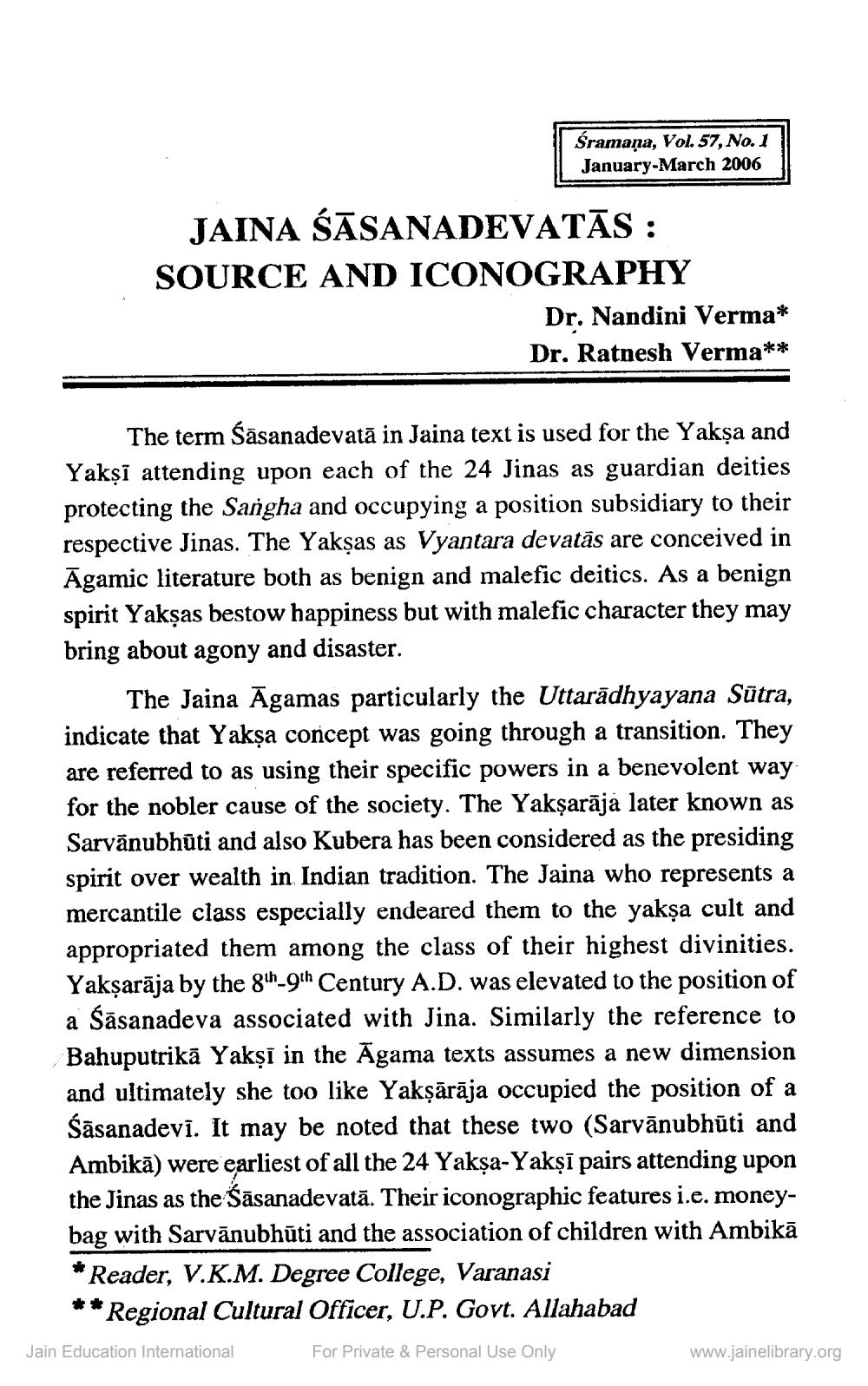________________
Śramaņa, Vol. 57, No.1 January March 2006
JAINA ŚĀSANADEVATĀS : SOURCE AND ICONOGRAPHY
Dr. Nandini Verma*
Dr. Ratnesh Verma**
The term Śāsanadevatā in Jaina text is used for the Yakṣa and Yakṣī attending upon each of the 24 Jinas as guardian deities protecting the Sangha and occupying a position subsidiary to their respective Jinas. The Yakşas as Vyantara devatās are conceived in Āgamic literature both as benign and malefic deitics. As a benign spirit Yakşas bestow happiness but with malefic character they may bring about agony and disaster.
The Jaina Āgamas particularly the Uttarādhyayana Sūtra, indicate that Yakşa concept was going through a transition. They are referred to as using their specific powers in a benevolent way for the nobler cause of the society. The Yakşarāja later known as Sarvānubhūti and also Kubera has been considered as the presiding spirit over wealth in Indian tradition. The Jaina who represents a mercantile class especially endeared them to the yakșa cult and appropriated them among the class of their highest divinities. Yakşarāja by the gih_9th Century A.D. was elevated to the position of a Śāsanadeva associated with Jina. Similarly the reference to Bahuputrikā Yakṣī in the Agama texts assumes a new dimension and ultimately she too like Yakşārāja occupied the position of a Śāsanadevī. It may be noted that these two (Sarvānubhūti and Ambikā) were earliest of all the 24 Yakșa-Yakṣī pairs attending upon the Jinas as the Sāsanadevatā. Their iconographic features i.e. moneybag with Sarvānubhūti and the association of children with Ambikā * Reader, V.K.M. Degree College, Varanasi
** Regional Cultural Officer, U.P. Govt. Allahabad Jain Education International For Private & Personal Use Only
www.jainelibrary.org




